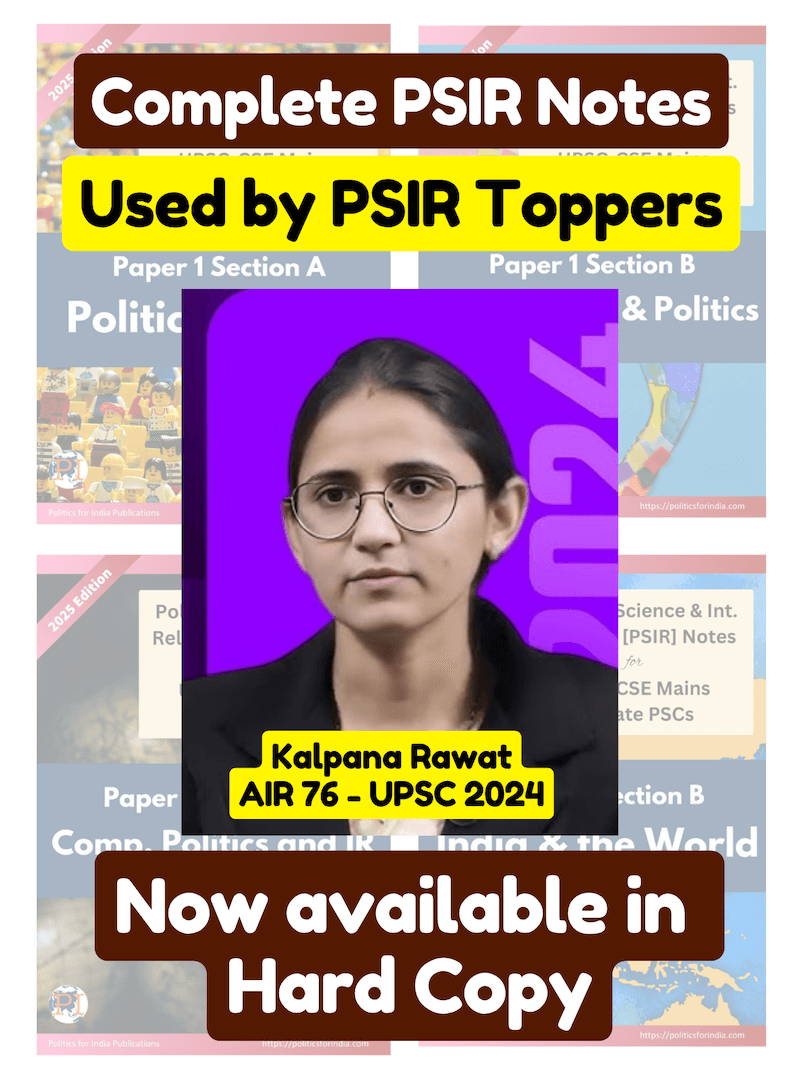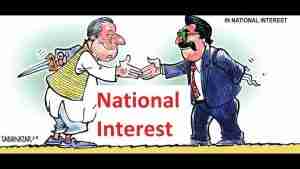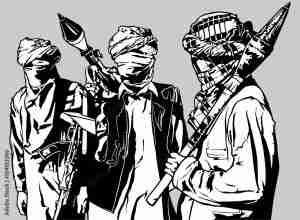1] From Bretton Woods to the WTO
A] Origins and Role of IMF and World Bank
In July 1944, 44 Allied nations met at Bretton Woods, United States, to contemplate a post-WWII international economic order. The outcome was the creation of the International Monetary Fund (IMF) and the World Bank (formally the International Bank for Reconstruction and Development, IBRD). These institutions aimed fostering monetary stability and post-war reconstruction.
The IMF was tasked with ensuring exchange rate stability and providing short-term balance-of-payments support, while the World Bank focused on development financing for war-torn and poor countries.
Together, these institutions came to be known as Bretton Woods Institutions (BWIs). These were and remain dominated by the Western powers, especially the United States.
For example, voting power in the IMF is quota-based on economic weight, giving the US (the largest shareholder) about 16.5% of votes – effectively a veto over major decisions which require an 85% majority.
Likewise, by long-standing convention the IMF Managing Director is always a European and the World Bank President an American, a post-war “gentleman’s agreement” that persists and reflects Western dominance.
1] Conditionality and Critiques
As the BWIs evolved, they became known not just for their financing but for the policy conditionalities attached to their loans. Especially from the 1980s onward, IMF and World Bank programs often required borrowing countries to implement austerity measures, trade liberalization, privatization, and other structural reforms (the core of the later “Washington Consensus”).
Critics argue these conditions, while aimed at stability and growth, often undermined the sovereignty and developmental priorities of recipient states. Developing countries complain that such structural adjustment programs (SAPs) benefited Western creditors and investors.
Joseph Stiglitz (former World Bank Chief Economist) in his book ‘Globalization and Its Discontents’ contends that the IMF’s one-size-fits-all approach worsened social outcomes in the Global South. He attributes IMF policies as main factor behind the 1997 Asian Financial Crisis.
The governance of these institutions has also drawn criticism for under-representing the Global South as pointed out earlier.
B] World Trade Organization (WTO)
1] GATT: Principles and Limitations
In parallel with the IMF and World Bank, efforts were made to create a trade institution. For the purpose, a General Agreement on Tariffs and Trade (GATT) was signed in 1947. GATT became the cornerstone of the multilateral trading system during the Cold War. It operated on core principles of non-discrimination among trading partners and national treatment, requiring imported goods to be treated the same as domestic products after entry.
However, GATT had significant limitations. It was a provisional agreement, not a formal organization, and its dispute settlement mechanism was relatively weak. Some sectors were not included, while agriculture was riddled with exceptions. By the mid-1980s GATT’s limitations had become increasingly apparent. The Uruguay Round (1986–1994) was launched to address these gaps, culminating in the creation of the World Trade Organization (WTO) in 1995 as GATT’s successor.
2] WTO
The WTO represented a more robust, rule-based trade regime built on GATT’s foundations. It is a formal international organization with around 1666 members. The WTO’s structure includes a Ministerial Conference as the top decision-making body (meeting roughly biennially), and numerous other councils/committees overseeing various agreements.
Decisions are generally made by consensus of members, reflecting the WTO’s member-driven character. Crucially, the WTO brought under one roof a bundle of multilateral agreements such as
- General Agreement on Tariffs and Trade (GATT 1994) for goods (updating the original GATT rules),
- General Agreement on Trade in Services (GATS) to liberalize services trade,
- Agreement on Trade-Related Aspects of Intellectual Property Rights (TRIPS) to set enforceable global standards for patents, copyrights, etc., and the
- Agreement on Agriculture (AoA) to reform agricultural trade.
It also included agreements on sanitary standards, technical barriers, investment etc.
3] Dispute Settlement Mechanism
The Dispute Settlement Understanding (DSU) is often hailed as its “crown jewel” of WTO.
The WTO’s Dispute Settlement Understanding (DSU) provides a structured and rule-based process for resolving trade disputes among member states.
- When a member believes another has violated WTO agreements, it can initiate consultations.
- If these fail, a panel of experts is convened to examine the case based on WTO law, and issue a report.
- This report can be appealed to the Appellate Body, which reviews legal interpretations.
- If the appellate body upholds the allegations, the losing member is obligated to bring its measures into conformity with WTO rules within a reasonable timeframe.
- A key strength of the DSU lies in its enforcement mechanism. If the losing member fails to comply with the ruling, the complaining member can request authorization from the WTO to impose retaliatory trade measures, such as tariffs, on the non-compliant member.
- This legally sanctioned possibility of retaliation provides a significant incentive for compliance and lends credibility to the WTO’s rules-based order.
This gave the WTO teeth: between 1995 and the mid-2010s, hundreds of disputes were resolved, and even major powers complied with rulings in many cases, giving credibility to the system.
4] Contemporary Challenges
In recent years the WTO has faced grave challenges that test its credibility and effectiveness.
1. Increasing Protectionism
One major issue is the resurgence of protectionism and unilateralism in some leading economies. The United States – once the chief architect and champion of the liberal trading order – has taken protectionist turns, president Trump unilaterally raising tariffs on US imports.
2. Dispute Settlement Body
Another critical challenge is the crisis in the Dispute Settlement Body (DSB). The WTO’s dispute settlement includes a binding Appellate Body (AB) to review legal interpretations of initial panels. This AB has seven judges, with a quorum of three needed per case. Appointments to the AB are made by consensus in the DSB.
Since 2017, the US has blocked the consensus needed to appoint new judges, citing concerns of judicial overreach. Consequently, by December 2019, the AB lacked the necessary quorum to hear new appeals, effectively paralyzing the binding two-tier dispute resolution system of the WTO.
There are currently no Members of the Appellate Body. The term of the last sitting Appellate Body member expired on 30 November 2020.
As a result, if a panel’s decision is appealed, the case cannot be resolved – a situation that risks a return to power-based trade diplomacy. This Appellate Body crisis undermines what had been the WTO’s central pillar. Despite near-universal agreement that reforms are needed, the US has continued its blockade, using it as leverage to demand changes in how the WTO makes rulings.
3. WTO Negotiations
Apart from above developments, there is also stagnation in WTO negotiations. The last round of major multilateral trade negotiations – the Doha Development Round launched in 2001 – ended in stalemate, largely over disagreements on agriculture and development issues.
One live area of talks has been fisheries subsidies, where for over 20 years members have been trying to discipline subsidies that contribute to overfishing.
A breakthrough came in June 2022, where an Agreement on Fisheries Subsidies was finally adopted – a “major step forward” to ban subsidies that fuel illegal, unreported, and unregulated (IUU) fishing.
However, this deal was a partial one; it did not yet cover the contentious issue of subsidies leading to overcapacity and overfishing.
India and South Africa, for example, took a firm stance insisting that developing countries’ small artisanal fishers be exempted. It argued that a stringent subsidies ban would unfairly cap its ability to support millions of poor fishers, while allowing developed nations (historically the biggest subsidizers) to retain advantages.
India’s demanded a 25-year exemption for developing countries and pushing developed nations to bear a larger share of cuts given their responsibility for depleted fish stocks.
This impasse has delayed the implementation of a comprehensive fisheries agreement.
More broadly, India’s role in the WTO exemplifies the voice of the developing world asserting itself. India has been a leading advocate for Special and Differential Treatment (S&DT) for developing countries in trade agreements.
India also famously insisted in the 2013 Bali Conference a need to protect public food stockpiling programs from being challenged under WTO subsidy rules. Indian negotiators often work in coalition with other developing countries (e.g. the G-33 on agriculture, or alongside South Africa on TRIPS waivers for medicines) to rebalance what they view as inequities in the trading system.
While Western commentators sometimes label India a “spoiler” in trade talks, India is upholding the developmental interests of the Global South and resisting pressures to unduly liberalize without sufficient safeguards.
5] Conclusion
Thus, the WTO stands at a crossroads: it remains a critical institution for global trade governance – as seen in its role during the COVID-19 pandemic (facilitating a TRIPS waiver for vaccines) and ongoing efforts to update rules for e-commerce and digital trade – but it struggles with great-power tensions and institutional gridlock.
The rise of mega-regional trade agreements and the return of protectionist rhetoric among major members threaten to erode the WTO’s centrality. Reviving the WTO will likely require addressing developing countries’ concerns and finding compromise to restore a binding dispute system.
India’s sympathetic outlook emphasizes reforming, not abandoning, institutions like the WTO to ensure they serve development, not just the West.
2] Council for Mutual Economic Assistance
In the early Cold War, the Soviet Union led the formation of an economic bloc to integrate the socialist economies parallel to the Western-led Bretton Woods system. The Council for Mutual Economic Assistance (CMEA or Comecon) was established in 1949 with founding members including the USSR and its Eastern European allies.
Its structure was less supranational than the IMF/World Bank or later the EU; it operated more as a coordinating forum. Much of Comecon’s functioning relied on bilateral agreements between the Soviet Union and individual satellites.
In contrast to BWIs, Comecon, was about planned coordination among planned economies. Whereas the IMF encouraged disciplined fiscal-monetary policies and provided short-term liquidity, the Soviet Union through Comecon often provided direct transfers or subsidies.Trade in Comecon was driven by political agreements: e.g. one country would specialize in heavy machinery, another in chemicals, each assured of captive markets within the bloc.
However, this model had inherent limitations. Prices were administratively set and often did not reflect real costs or supply-demand, causing imbalances. Further, national interests often overrode: smaller states were wary of relying too heavily on Soviet direction. Unlike the global reach of the IMF/World Bank, Comecon was a closed regional system and its integration did not extend beyond the socialist sphere.
Comecon was born as a Cold War instrument. It formed shortly after the US launched the Marshall Plan (1947) to aid Western Europe. The collapse of Comecon came swiftly with the end of the Cold War. As democratic revolutions swept Eastern Europe in 1989, those countries abandoned communist economics and turned westward. The organization formally dissolved in 1991.
The fall of Comecon underscored the superior adaptability of the capitalist market model. While capitalist economies had their own crises in the 1970s, they proved capable of reform. The mixed economies of the developing world (e.g. India) learned lessons from both models. Indeed, India in 1991 undertook major liberalization precisely as the Soviet model failed.
After 1991, the institutions of the Bretton Woods order (IMF, World Bank, GATT/WTO) became nearly universal – former Comecon members joined the IMF/WB and many later acceded to the WTO in the 1990s and 2000s, embracing market reforms.
3] The New International Economic Order (NIEO)
The New International Economic Order (NIEO) is a movement by the developing and third world countries to end economic colonialism and dependency through a new economic model. The main argument of third world countries is that – the current international economic order is a form of neo-colonialism and perpetuates inequality.
A] History of NIEO
The idea of a New International Economic Order emerged in the late 1960s and 1970s. Amidst newly independent states in Asia and Africa, there was growing realization that political independence had not translated into economic equality. Post-colonial countries found themselves reliant on exporting primary commodities, raw materials to Western markets while importing expensive manufactured goods. This further widened the income gap between the developed North and the developing South.
In 1964, the United Nations Conference on Trade and Development (UNCTAD) was established, and the Group of 77 (G-77) was formed by 77 developing nations as a coalition to promote their common interests.
The global South argued that the structure of the global economy was neo-colonial. Rich countries industrialized under free trade, while poor ones were stuck exporting cheaper raw materials. Throughout the 1960s, these concerns were raised at UNCTAD conferences.
In 1974, the UN General Assembly, at a Special Session demanded by the G-77, adopted the Declaration on the Establishment of a New International Economic Order with an accompanying Programme of Action.
Recently, in 2018, the UNGA adopted the resolution ‘Towards a New International Economic Order’, that reaffirmed the need to continue working towards a new international economic order.
B] The Need for NIEO
Currently, the global south faces major problem, it includes a) high population, b) unemployment c) poverty d) illiteracy, e) political instability etc. A lot of third world countries faced the brunt of colonization in previous century. This led to huge transfer of resources from these countries to the global north, which is also partly responsible for the socio-economic problems of these countries.
Further, the forces of globalization have created a significant global interdependence between developed, developing and underdeveloped countries. There is wide gap between developed and periphery countries which limit the scope of economic and trade relations. Thus, the current world order perpetuates the transfer of wealth from global south to global north, increasing the wealth gap.
There is also a frustration among third world countries that the trade relations post decolonization have continued to serve the interest of the developed parts of the world. The WTO have also failed and have been used by western countries to further their interest.
Thus, there is a strong demand to establish a New International Economic Order (NIEO) by developing countries to remedy the situation. The third world is home to around 88% of global population, contributing around only 42% of global GDP. Thus, the development of this part of the world becomes extremely important.
C] NIEO Reforms
The NIEO agenda sought comprehensive reforms across trade, finance, technology, and sovereignty. Underpinning it was a philosophy of economic self-determination: just as political colonialism had ended, economic subordination should too. Key demands included:
- Sovereign equality of all states, with non-interference in their internal affairs.
- A just relationship between the price of raw materials and other goods exported by developing and developed countries
- Promotion of cooperation among the countries of the South, to ensure greater individual and collective autonomy and a better bargaining power vis-à-vis global north.
- The states have full sovereign rights over their natural resources. This legitimized moves like nationalization of oil, minerals, etc., without former colonial or foreign companies interfering.
- International codes of conduct to regulate MNC activities and for greater sharing of their technology and profits with host countries.
- Easier and cheaper access to advanced technology for developing nations. Loosening the strict intellectual property regimes and increasing technical cooperation.
- Changes in the international financial system to favour development. Giving developing countries greater voice in the IMF/World Bank, more development assistance and fair credit.
- Promotion of cooperation among the countries of the South, to ensure greater individual and collective autonomy and a better bargaining power vis-à-vis global north.
The NIEO documents emphasized sovereign equality, interdependence, common interest, and cooperation as guiding principles. These demands are essentially asking the wealthy nations to cede some advantages and redistribute global wealth and power. As a UNCTAD slogan put it, it was about “trade not aid” (seeking systemic change rather than charity).
D] India and NIEO
Since independence, India have played a significant role in advocating and developing NIEO. South-south cooperation have been one of the important pillar of Indian foreign policy and reflects the Indian spirit of Vasudhaiva Kutumbakam (whole world is one family).
- As a leader of NAM, India played an important role in establishing NIEO. The economic issues of the 3rd world has remained a major point of discussion in NAM.
- India played a crucial role in setting up the UN conference on Trade and Development (UNCTAD) that promotes the interests of developing countries in world trade.
- India’s role in amending the GATT rules was also decisive. It allowed the imposition of import restrictions by developing countries and improve their exports.
- India has championed the cause of developing countries in WTO e.g. Doha negotiations, Covid Vaccine TRIPS waiver etc.
- India has been sharing her knowledge and expertise on the experience of development with neighbouring and other developing countries through different platforms like ITEC, RIS, ISA, CDRI etc.
- India is also advocating NIEO through multilateral alignments like BRICS, IBSA, Russia-India-China (RIC), G4 Nations initiatives etc. aimed at creating multipolar world order.
E] Scholars Perspective on NIEO
India believes in in ‘One Earth, One Family, One Future’
“As far as India is concerned, our engagement with the Global South is not just a matter of policy, it is ingrained in the very fabric of our culture and philosophy,” Mrs. Ruchira Kamboj, Permanent Representative to the UN.
1] S Jaishankar
“The case for a ‘Global South sensitive’ model of globalization therefore becomes stronger by the day. In this regard, India stands for three fundamental shifts that can create a conducive environment.”
- The model of globalization: from self-centred globalization to human-cantered globalization. This means shifting the focus more on development as a whole.
- A different approach to Innovation & Technology: From being on the receiving end of technological patronage, to deploying Global South-led innovations for societal transformation.
- Development Cooperation: From debt creating projects to a demand-driven and sustainable development cooperation
“South-South cooperation must be as a parallel process to North-South Cooperation and SDGs can be met by joint efforts of both.”
2] C Raja Mohan
“India should avoid the temptation of building a bloc against the developed North. Instead, offer sustainable economic cooperation to the Global South through national, regional, and global institutions to further joint causes.”
* [The topic of NIEO is also covered in Paper 2 Part B, topic 4.3 – South South Cooperation. The content of that topic is same as this section.]
* [The topic of Globalization and World Economy gets covered under Paper 2, Part A, Topic 4: Globalization]















